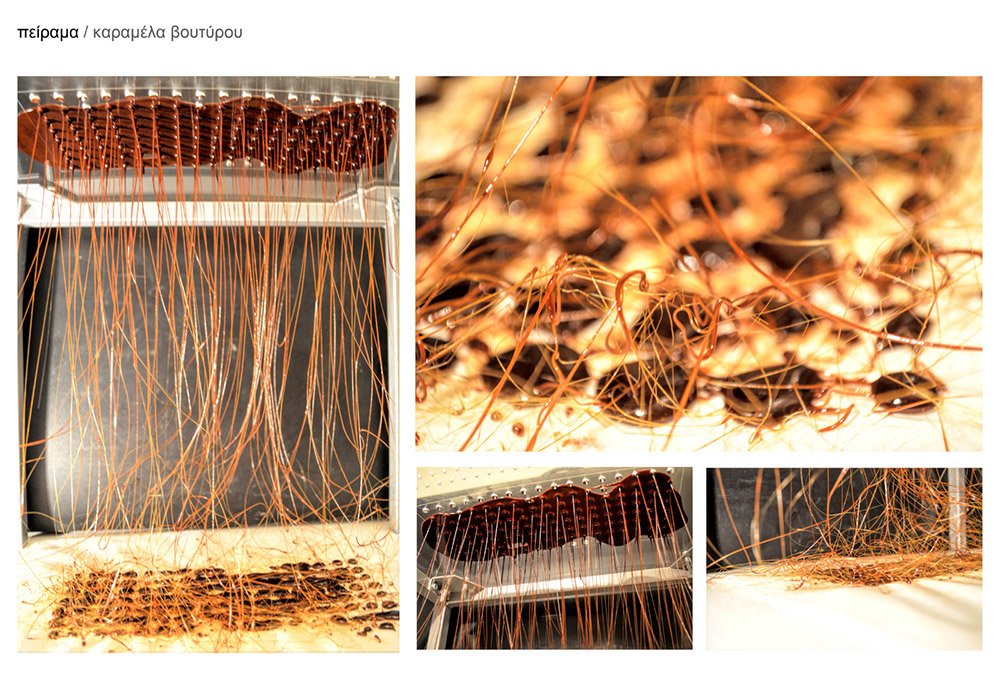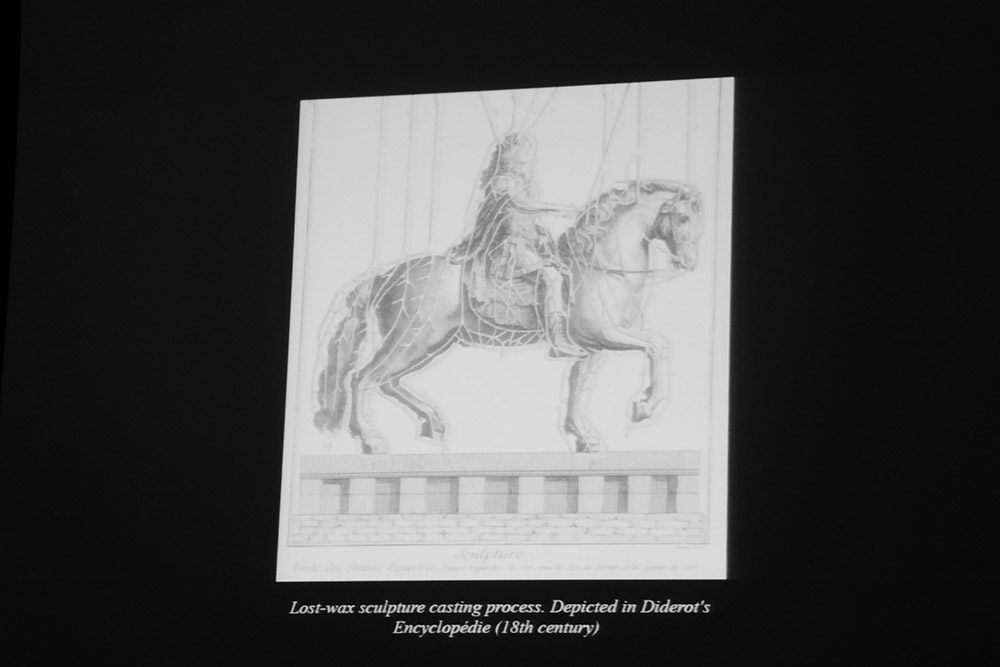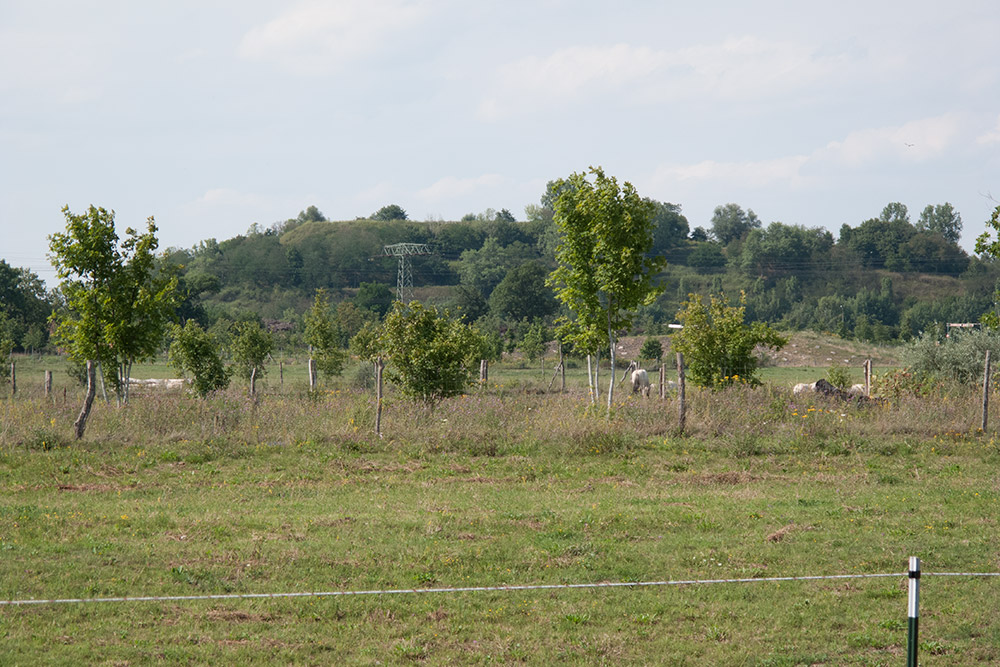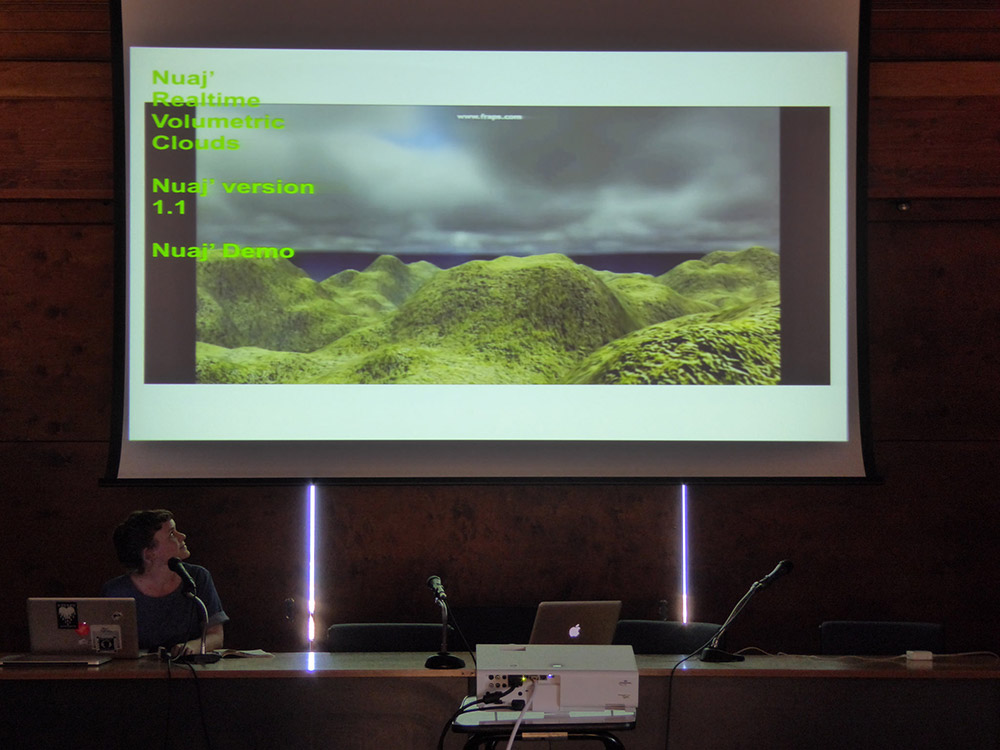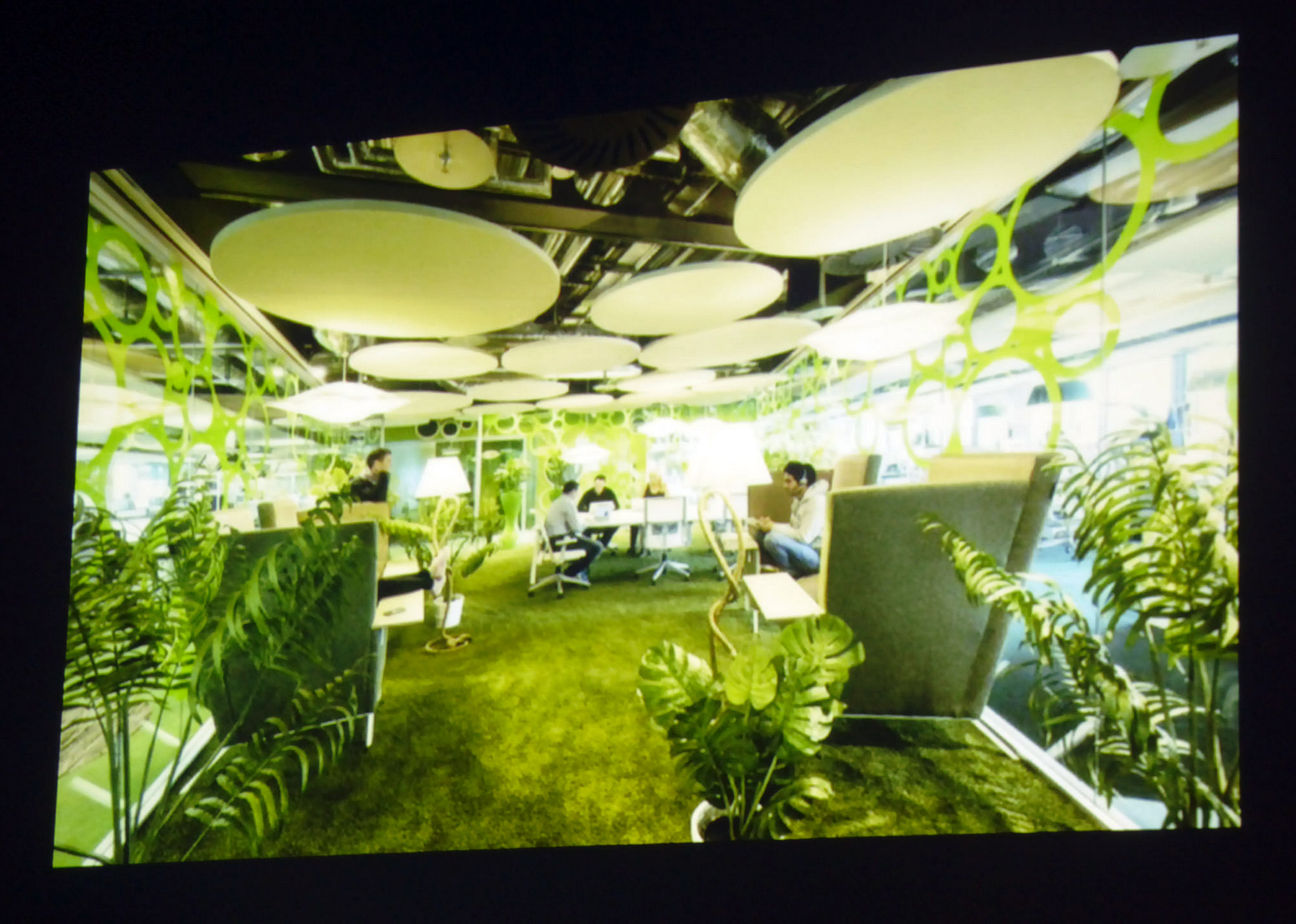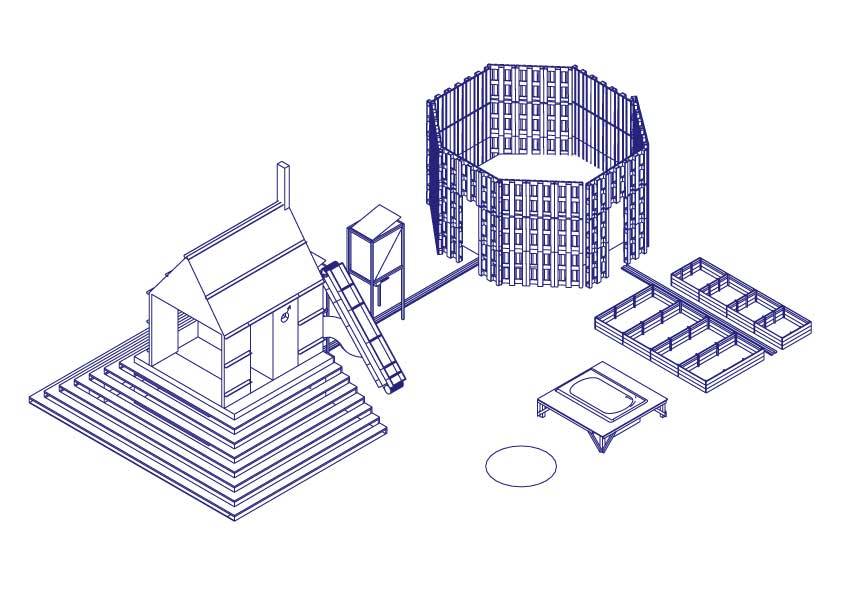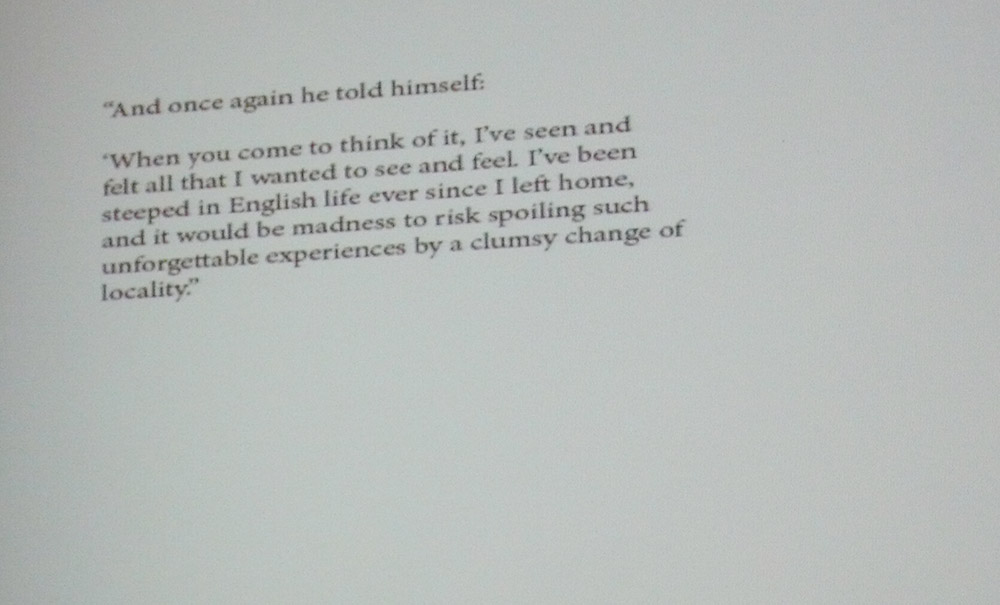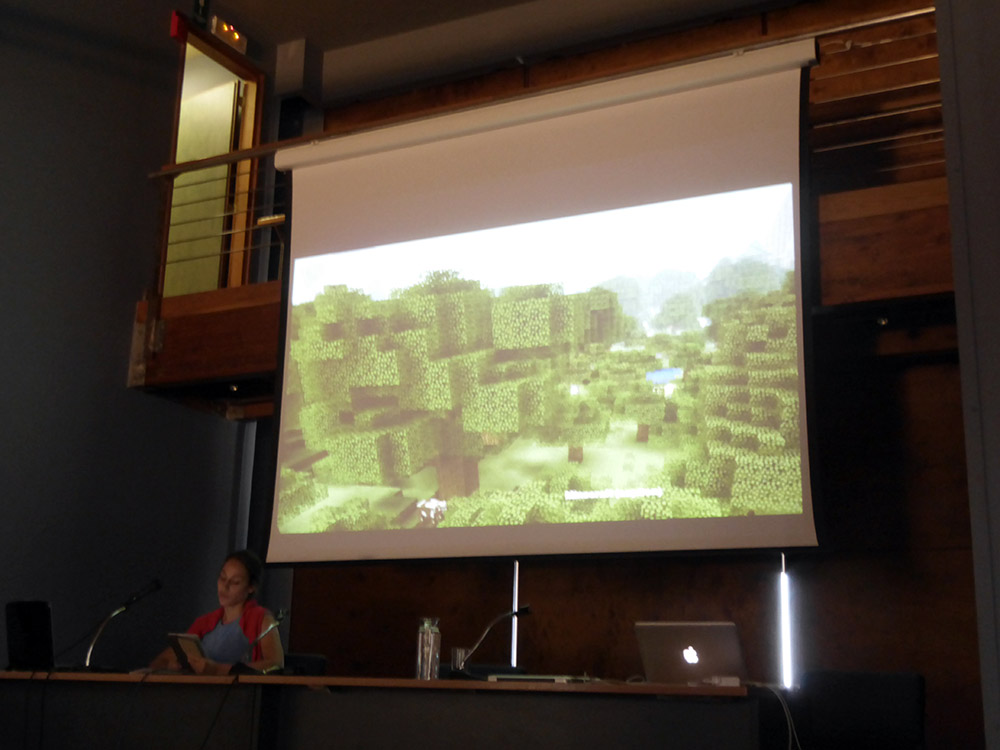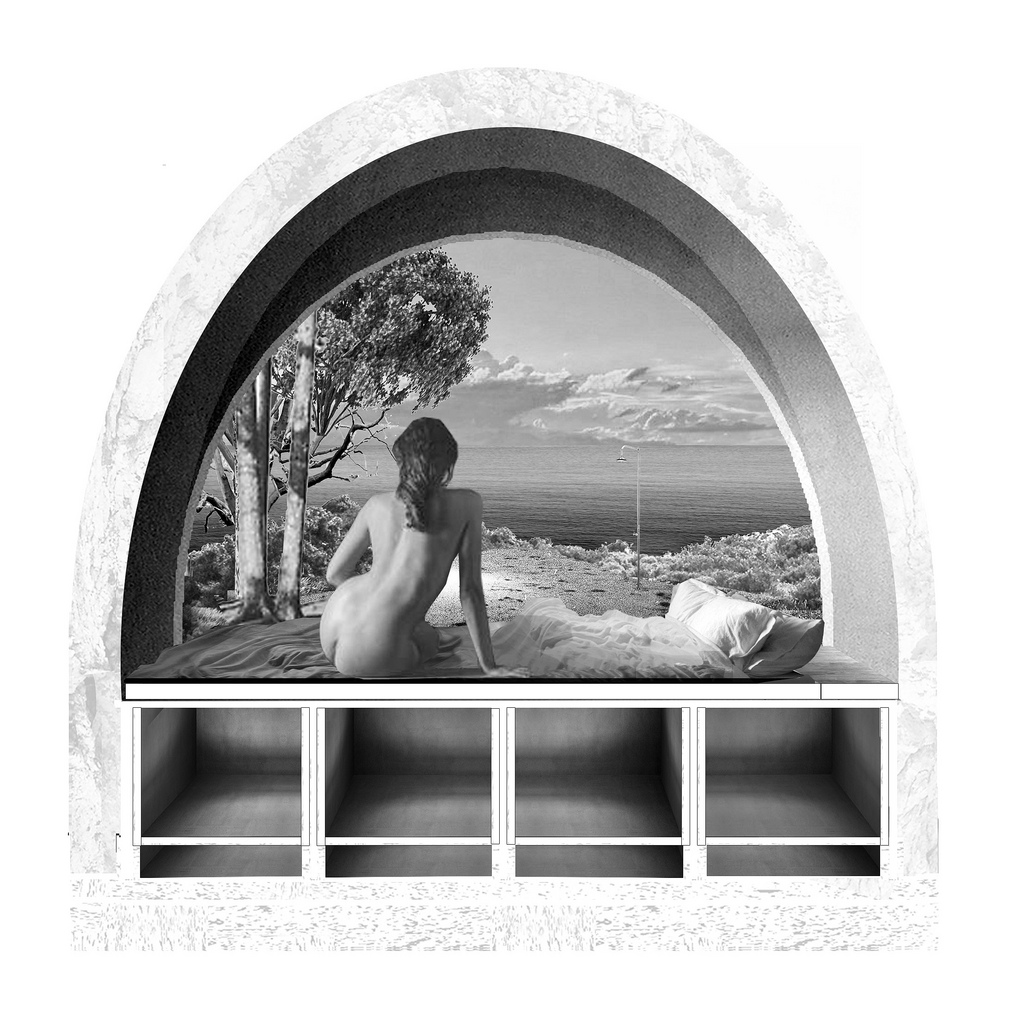Artificial Natures – The 2015 KAM Workshop in Chania, Crete
I recently returned from Crete, where, together with my wife Evi Chantzi, I was involved with the coordination and programme of this year’s KAM Workshop in Chania. The KAM Workshops have been running since 2002, and were conceived as an investigation into architecture through the study of its expression as a local phenomena. The workshops are organised by the core team of Elina Axioti, Aristides Antonas and Yannikos Vassiloulis, of the Athens-based Architecture Syndicate collective.
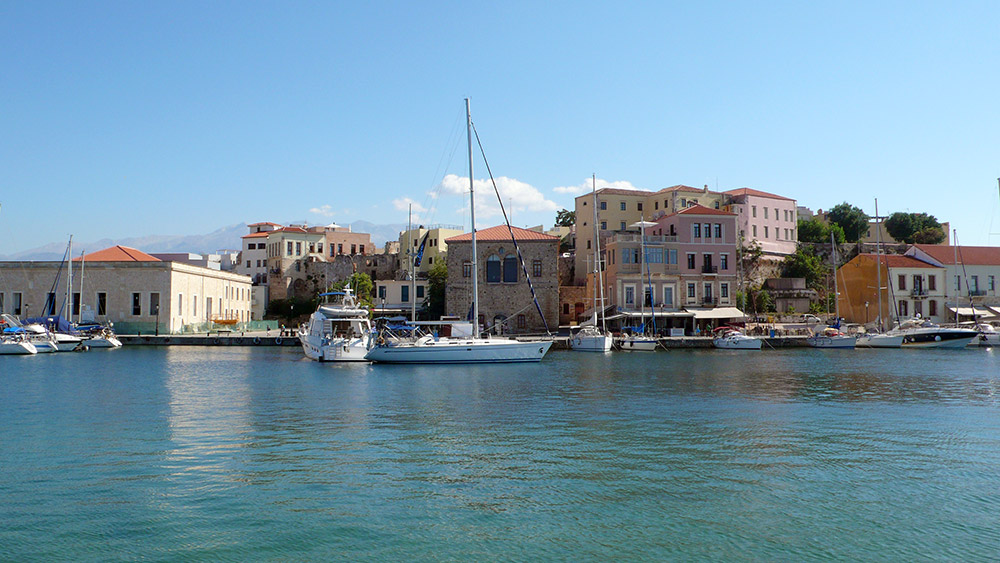
An altogether too picturesque photo of the Venetian Grand Arsenal (center) at the old harbour, Chania
Held annually in the Venetian Grand Arsenal of Chania, this year’s workshop, entitled Artificial Natures, brought together students of architecture and design from Greece and beyond, with practitioners and academics from a range of disciplines. The workshop title, with its deliberate use of the plural, asserts the multitude of narrative constructs which might define our notions of nature and the artificial. The larger debate surrounding the term and consequences of the anthropocene was an ever-present backdrop to a series of lectures to which I also contributed. More on the lecture series below. At a later date I will turn my own presentation into an article for publication here.
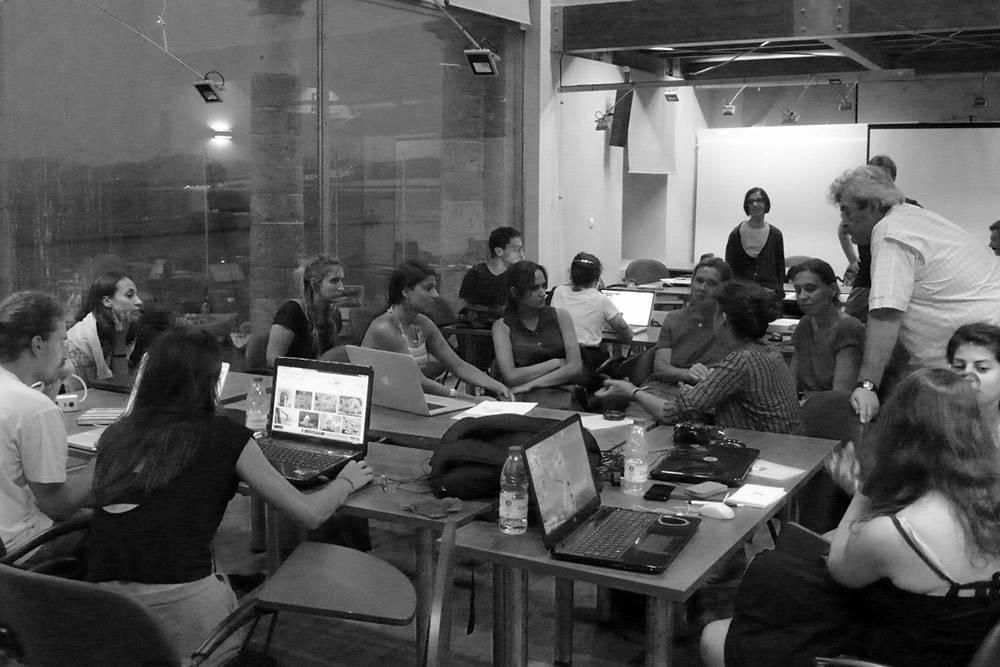
Students in conversation with Heike Schuppelius, Elina Axioti and Stavros Vergopoulos
In seven days, the participating students conceived and presented a wide range of proposals for, and inspired by Chania and Crete: a bio-architectural proposition for Chania’s streetscape; staged interventions manifesting from the water infrastructure; a meditation on modern ruins; an investigation into the extraction, use and values of marble; a proposition for a post-internet, “civilization-kit” based on Deleuze’s critique of Robinson Crusoe.
Although I’ve spent time on Crete before, the workshop week was one of those context-shifting experiences which makes travel such a potentially profound experience. Most of the participants and organisers of the workshop (including myself and my wife) were housed in the Mediterranean Agronomic Institute of Chania (MAICh), on the outskirts of town, whose multilingual welcome banner, hung over the main entrance, refreshingly and conspicuously lacked most Northern European languages. Having independently come to the conclusion that Crete has a specific geo-cultural potency due to its snug Mediterranean centrality (parts of the island are closer to Libya than to Athens; Chania is further south than Tunis), the banner and the Institute’s program was a reminder that I was in a completely different space, distinct from my own northern notions of Europe.
Here’s an overview of the KAM-Workshop lecture programme:
Stavros Vergopoulos, Associate Professor for Representational and Architectural Design at the Aristotle University of Thessaloniki, presented an overview of his teaching. His program, Natural Systems and Design Processes, encourages students to experiment with small-scale natural phenomena in order to arrive at unexpected structural and spacial models, which are then vigorously analysed and digitally re-modelled. Melted wax, shock-solidified in cold water, or molten caramel extruded into a mesh of threads were some of the starting points for deeper investigation.
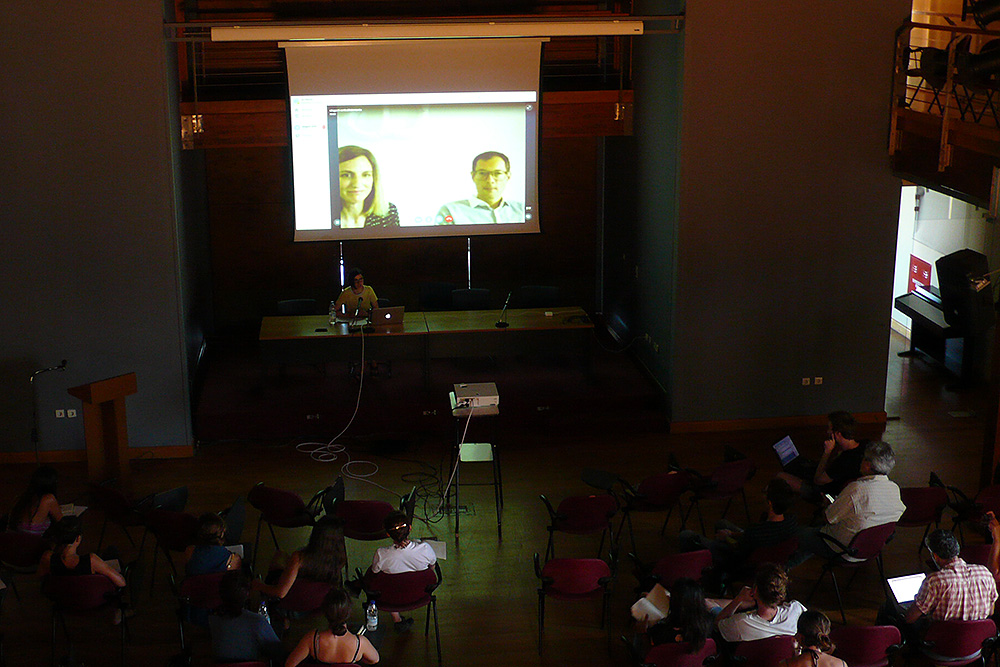
Elegant Embellishments in conversation with Evi Chantzi
Braving a wobbly Skype connection on Tuesday morning, Evi Chantzi hosted Allison Dring and Daniel Schwaag of Elegant Embellishments (and both contributors to Slab), who presented their research into biochar as a carbon-negative construction and manufacturing material. They also introduced the students to their smog-busting Prosolve 370e façade elements, installed at Mexico City’s Hospital Manuel Gea Gonzales.
Artist and curator Petros Moris presented Notes on Recurrent Forms. Using broad associative strokes, Moris’ dense talk managed to encompass the mythical bronze giant Talos (forged by Hephaestus and given to Europa, the lover of Zeus, in order to protect Crete from pirates); early industrial-era production lines; Marx’s “ideal machine”; the role of natural forms in the extruded grids of Superstudio; Google’s Deep Dream algorithm; and the collapse of space-time ensured by the invisible infrastructure of logistics. Moris also proposed a succinct definition of nature by suggesting that it is “everything which escapes design”.
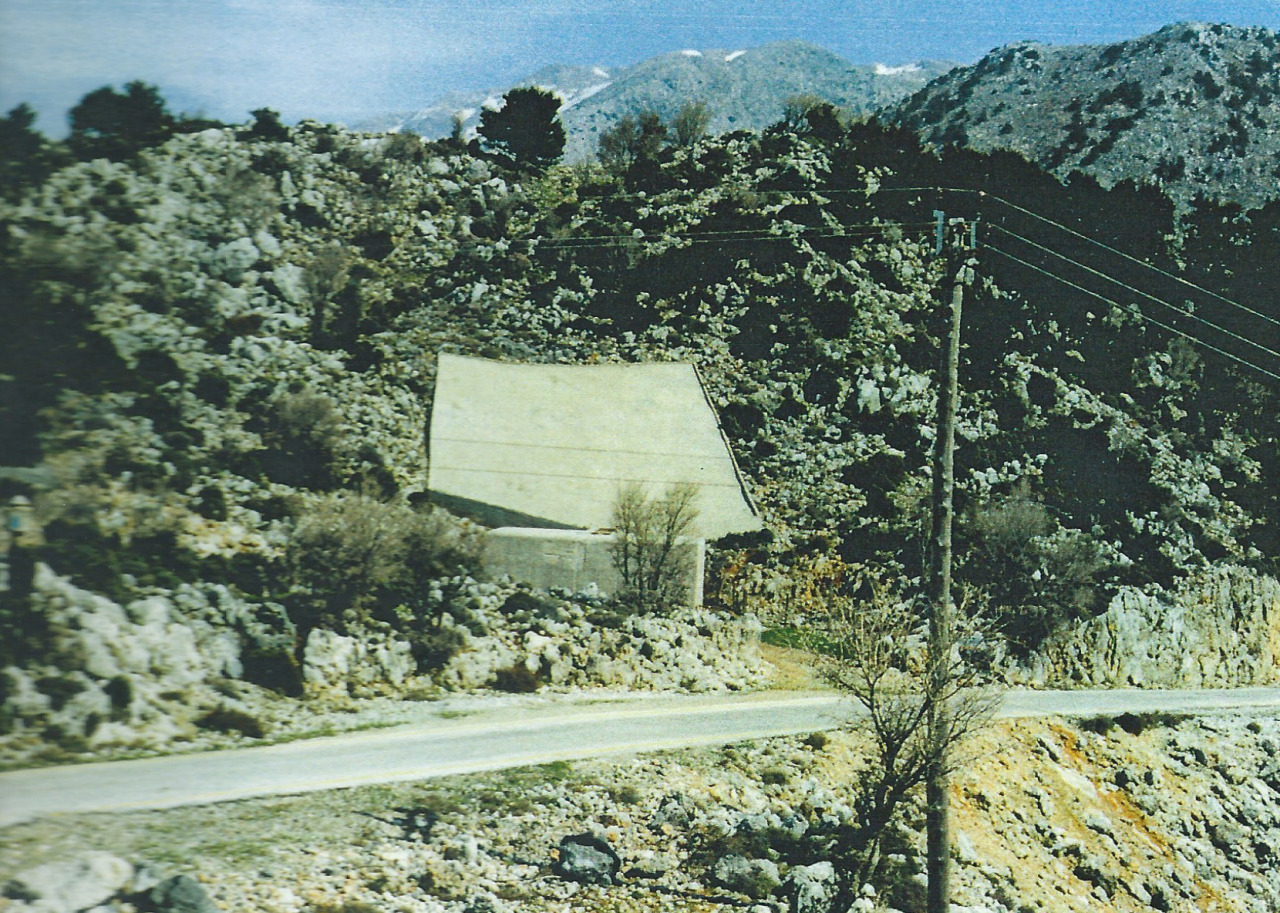
A rainwater-collector on Crete: presentation photo by Heike Schuppelius
In an absorbing presentation, scenographer Heike Schuppelius talked about the thought and work involved in the creation of Natural Habitat, a performance installation with dancer Laurie Young. The piece imagines our world 200 years from now, with Young playing a survivor of some unnamed ecological disaster cast into a surreal landscape where she encounters a host of other desperate creatures. Natural Habitat was performed in 2011 at Berlin’s Natural History Museum, inside a specially constructed diorama. Schuppelius ended the talk with a neat aside. For years she has been documenting her observation of rectangles and squares within supposedly natural landscapes. The mountains of Crete, it turns out, are peppered with concrete rain collectors whose function is to provide sheep and goats with drinking water.
Wednesday began with my own presentation, entitled Landscapes of Leisures as Systems of Exchange, or, How to Find the Wrong Horse, which focussed on an area of The New Death Strip around Berlin’s highest point, the 86-meter-high Dörferblick, made of war rubble and domestic waste. The hill forms a vantage point from which a landscape of interlocking systems of economic and cultural exchange can be surveyed. My return to this area after five years was prompted by 2010 plans to retain a herd of Przewalski’s horses in the area, a Mongolian wild horse extinct in the wild only until recent reintroduction.
Multimedia designer Jenny Rodenhouse, who also participated in the workshop’s studio-work, introduced us to her research work on various designated test sites dotted around the USA. Her talk, The Tornado is Staying but the Lightning Will Need to be Replaced, focused on a speculative narrative spun out of the discovery of precipitation-modification test sites embedded within California’s San Gabriel Mountain suburbs, whilst referencing UniStorm, a weather-simulation engine for the game development platform Unity3D.
Mona Mahall and Asli Serbest of studio m-a-u-s-e-r and the Stuttgart State Academy of Art presented Natural Wifi, an investigation into the material culture of the internet. Mahall and Serbest offered a reading of the internet as a “total environment”, in which an aesthetic obsession with nature manifests itself in Californian hi-tech campuses designed to resemble jungles, or Feng-Shui tips for organising computer desktops.
Via another very wobbly Skype connection, we were joined on Thursday morning by Valentina Karga, an artist with a background in architecture who I have known for several years after having met at the Berlin offices of LIN Architects. Valentina’s interest is in the study of waste. Referencing, among others, Graham Caine’s Ecological House of 1972, she described various recent projects including the award winning Temple of Holy Shit, which transforms a custom-made public toilet into a factory-like performance space, ritually turning visitors’ bodily waste into vital terra-preta soil for the surrounding park and gardens.
Elina Axioti’s lecture, Against Nature, took its name from the English title of French novelist Joris-Karl Huysman’s 1884 À rebours. In a key episode of the novel, the reclusive protagonist Jean des Esseintes decides, on reading the work of Dickens, to leave his countryside retreat and travel to England. Whilst waiting for his train in Paris, he eats in an English restaurant. On realising that his fellow diners esentially embody his image of the English, as derived through literature, he cancels his trip and returns home. Axioti made the point that Huysman seems to have anticipated modernity’s propensity to manufacture artificial realities.
In Thoreau, English Gardens and Post‐internet Natural, Juli Vlassi asked how we should re-define the idea of wilderness from within a mode of thinking which acknowledges the redundancy of separating the natural from the artificial. From the 19th century recluse to Minecraft hermits, the retreat into wilderness appears to have shifted from an extra-infrastructural act of dissent, to an inter-infrastructural leisure pursuit.
In the final presentation on Thursday, Aristide Antonas presented The Shelters of Spengler. The project is an architectural investigation which imagines a series of provisional dwellings as a performance within a “constructed nature”. The unpopulated Greek island of Petasi, just off the coast of the tourist destination, Hydra, is the nominal location for these structures. Their hidden infrastructure forms an “unreal scenography” in this meditation on Oswald Spengler’s The Decline of the West which asserts that every civilisation fails when it produces no more values.
•
I’d like to extend my thanks to Elina Axioti and Aristide Antonas for the opportunity to be involved, as well as to all the participants and lecturers who took part, for making it such a fun and rewarding week.
Links
→ KAM Workshops
→ Artificial Natures on Tumblr
